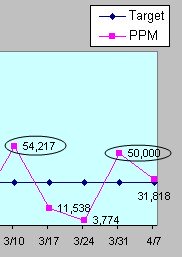|
Auditing for Process Effectiveness
Process effectiveness is the ability to achieve the process goals and objectives planned for each process. Recall from the process model page that goals and/or objectives are just one of the commonalities of all processes. Every process needs these goals, otherwise your company cannot determine if its processes are doing what they are intended to do. The requirement of determining process effectiveness is documented in several locations within the ISO 9001 standard. Clause 8.2.2 states that audits are to ascertain that the QMS is effectively implemented; clause 8.2.3 states that companies will monitor, measure and determine if the process attains its goals or objectives; clause 4.1 says to determine the methods your company needs to know that the operation of the processes are effective, tells us to measure and analyze the processes and to take action when the goals are not met. So, it’s pretty clear that the standard demands that we verify if our processes are effective.
To the trained eye, the data is revealing an ineffective process. Not only is the goal not being met consistently, the two circled incidents show the data wasn’t near the target. Additionally, the last data point is not at or below the target goal, 3 of the last 5 data collections prove that this is not an effective process. This is a process in need of problem solving. In review, obtain the data. If data is not available, suggest that data be collected per the ISO 9001 standard as an observation or an improvement opportunity. You’ve just created a value-added audit if you do so.
|
 Process data should be made available to the internal auditor during the audit planning phase. The auditor may need to request this information from the process owner if it is not readily available to them. Once you have the data, study the information to determine if the process regularly meets its defined objectives. The snippet of process data to the right shows two recent incidents of the process exceeding objectives. The auditor should ask the process owner what went wrong and what did you do to correct the issue.
Process data should be made available to the internal auditor during the audit planning phase. The auditor may need to request this information from the process owner if it is not readily available to them. Once you have the data, study the information to determine if the process regularly meets its defined objectives. The snippet of process data to the right shows two recent incidents of the process exceeding objectives. The auditor should ask the process owner what went wrong and what did you do to correct the issue. 